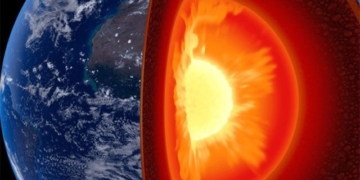A group of military scientists has developed laser imaging technology that enables ground stations to identify and track targets in space with unprecedented accuracy.
The radar device, designed by Professor Han Fei at the National University of Defense Technology in Anhui Province, can capture images of objects the size of a fist in low Earth orbit with a resolution of up to 3mm. This technology could assist in directing laser beams from the ground to eliminate small pieces of space debris that threaten satellites and spacecraft, Han and his colleagues reported in the journal Acta Physica Sinica on March 12.

Small pieces of space debris measuring a few centimeters pose a significant threat to satellites. (Photo: Space Journal)
The biggest headache for aerospace engineers is larger debris, measuring 1 to 10 cm, since satellites have protective layers that prevent detection of smaller debris, while larger debris can currently be detected in time to adjust their trajectories. In 2016, one of China’s largest space radar systems lost 4% of its power supply after a piece of debris longer than 1 cm struck the solar panel of a satellite.
High-powered lasers can alter the trajectory of such small debris, causing it to eventually fall through the Earth’s atmosphere. However, the laser must be fired with millimeter-level precision, according to Han’s research team. In a low-gravity environment, most debris floats freely, making identification and tracking more challenging.
The new technology, named laser reflection tomography, is inspired by the CAT scan method used in hospitals. It employs several laser beams to illuminate the target surface and then reconstructs images from the light particles emitted in various directions. The resolution of images captured using this method is determined by the slight differences in the angle of the laser beams when directed at the target, rather than the distance from the observer. By improving the quality of the laser source and the sensitivity of the receiving device, scientists can obtain ultra-clear images of tiny objects from a distance.
The radar developed by Han and his team emits multiple short pulses with a maximum power exceeding 100 kilowatts. Located by a reservoir in the suburbs of Hefei, the device produces very clear images of a 5 cm wide rotating target from a distance of 1 km. The results provide evidence of the device’s potential use in space.
Han stated that he and his colleagues developed the technology based on a high-quality laser source that significantly reduces noise affecting signal quality. They also developed a new artificial intelligence algorithm to estimate the random motion of small targets, enabling the radar to create high-quality images with incomplete and rapidly changing information.


















































